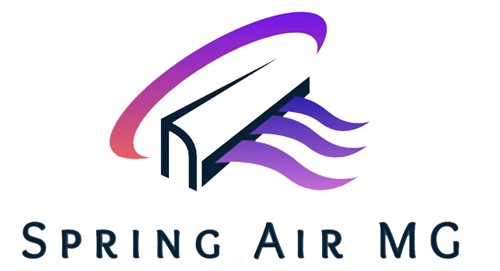From Bowie and Laurel to Upper Marlboro and Hyattsville, homes in Prince George’s County handle real swings in dust, pollen, and humidity. Professional duct cleaning can make a big difference, and a little preparation on your side helps the visit go faster, stay cleaner, and deliver better results.
What to Expect on Service Day
A reputable crew begins with a short walkthrough and a system check. They connect a high CFM HEPA vacuum to your trunk lines to create negative pressure, seal registers to contain dust, and use rotary brushes or air whips so debris lifts and flows into sealed filtration. The blower compartment and return plenum are addressed, and coil cleaning is added when needed. Most condos and townhomes take about two to three hours. Many single family homes take three to four hours, with extra time if access is tight or contamination is heavy.
The Day Before
Make access simple. Choose a parking spot near the entry so hoses can reach the air handler with minimal distance. Clear a straight path from the door to the equipment and to vents on each floor. Move fragile items away from registers and confirm that grilles are visible rather than hidden behind rugs, furniture, or drapes. Provide three to five feet of open space around the furnace or closet unit so technicians can work safely. If supply or return runs pass through an attic, crawlspace, or garage, unlock those areas and remove anything that blocks the hatch or scuttle.
Morning Of
Set the thermostat to Off and keep the fan on Auto unless your provider advises otherwise. Place pets in a closed room or arrange care outside the home. Open gates and interior doors so the team can move freely. If anyone in the household is highly sensitive to dust, consider planning an outing during the most active cleaning phase. Protect soft furnishings near vents with a clean sheet if you prefer an extra layer of assurance. Ensure a standard 120 volt outlet is available near the air handler or in the garage.
Room by Room Details
In living areas and bedrooms, slide small tables and lamps away from floor registers and lift curtains off supply grilles. In kitchens and dining spaces, pull back bins or stools that might hide toe kick vents. In basements and utility rooms, clear the floor around the air handler and confirm an unobstructed route to trunk lines. For attics and crawlspaces, provide a stable ladder if needed and place a cloth near the access hatch to keep floors clean during entry and exit.
What to Tell the Technician
Share the rooms where airflow feels weak or where hot and cold spots persist so those branches can be prioritized. Mention any past moisture issues, musty odors, or clogged drains so the crew can check for source problems. Note recent remodeling, especially drywall sanding or floor refinishing, because that dust tends to lodge in returns. If there are allergies, asthma, infants, or elders at home, ask the team to pace agitation and containment to minimize disturbance.
When Chemicals Come Up
Routine cleanings rely on negative pressure and mechanical agitation. Antimicrobial products are for verified microbial issues only and should be EPA registered. If a treatment is proposed, ask which product will be used, why it is necessary, and how occupants and pets are protected during application.
Mistakes to Avoid
Do not leave furniture over returns or supplies, since that slows the visit and can leave sections less thoroughly cleaned. Do not forget attic or crawlspace access, since locked hatches delay work. Be cautious of teaser prices that seem too good to be true, because they often exclude returns, components, or proper agitation. Do not skip a fresh filter after the visit, since a clean system deserves a clean starting point.
Keeping Results Longer in Prince George’s County
Use the right filtration. If your system supports it, move to MERV 11 to MERV 13 and replace filters on schedule during heavy heating or cooling seasons. Keep indoor humidity near 40 to 50 percent and maintain coils and condensate drains each cooling season. Seal accessible duct leaks in attics and crawlspaces so dust is not pulled in from unconditioned spaces. After sanding, drywall work, or floor refinishing, plan a short follow up cleaning so ultra fine dust does not linger in your returns.
FAQs
Do I need to leave the house?
Usually not. If someone is very sensitive to dust, stepping out during the most active phase can feel more comfortable.
Will the process be messy?
Containment and negative pressure keep debris moving into sealed filtration. Reputable providers tidy work areas and reinstall registers before leaving.
How long will it take?
Condos and townhomes typically take two to three hours. Many single family homes in Prince George’s County take three to four hours.
Will cleaning fix every odor?
It often helps a great deal. Lasting results depend on addressing moisture sources, maintaining filtration, and keeping coils and drains clean.
